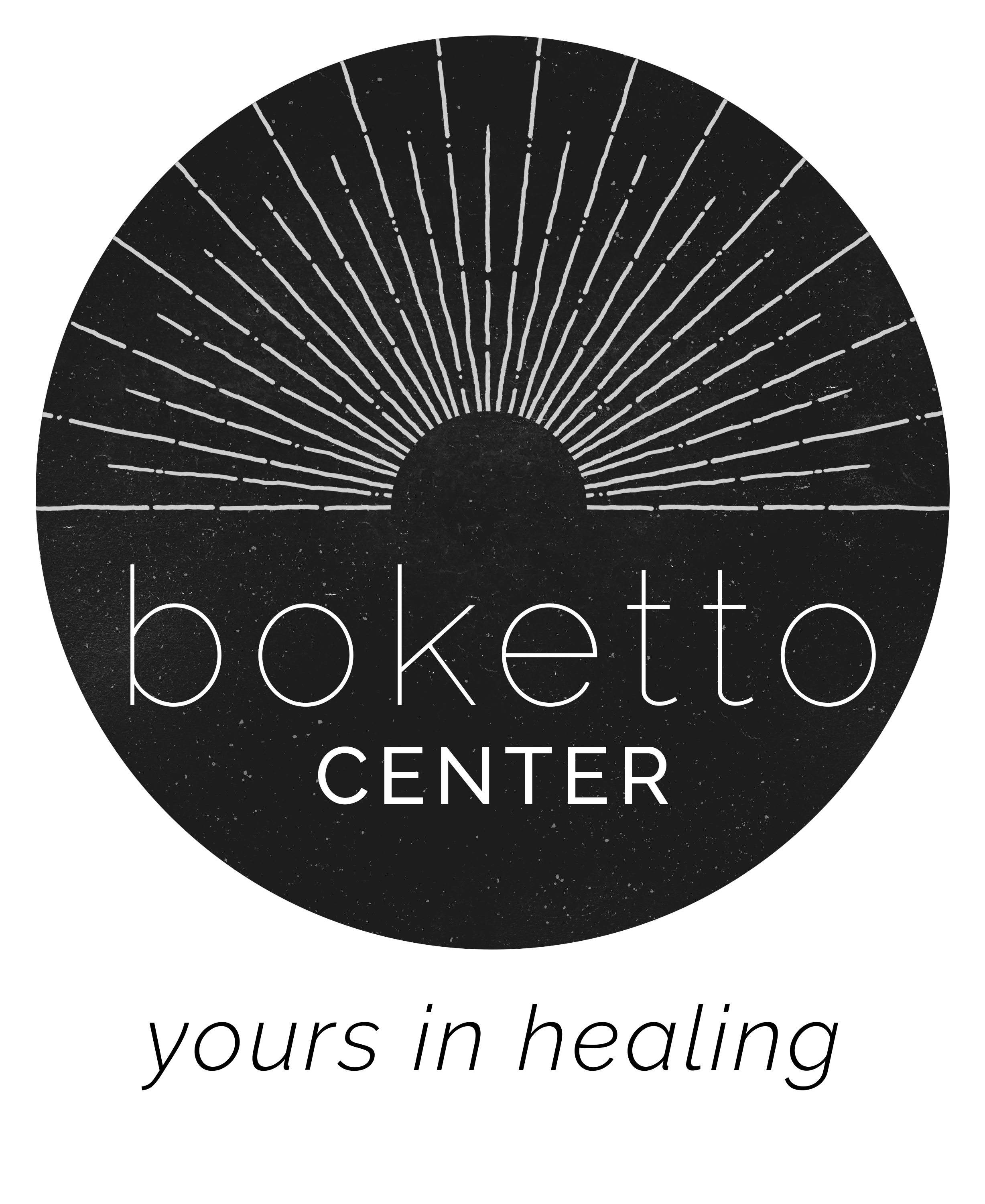Grounding Tools for Managing Trauma Triggers
Before a person starts to process their trauma, it is imperative for them to gain a sense of safety and control within their bodies. This can be accomplished by learning and implementing healthy coping skills and grounding techniques. These can be used when the trauma reactions feel unmanageable and our sense of safety is compromised.
GROUNDING TECHNIQUES
Grounding techniques are strategies used to bring an individual out of a panic attack, PTSD flashback, unwanted memory, stressful emotion, dissociation, or state of anxiety. They help a person come back to the present by bringing attention to their senses and connecting with their body. Certain grounding techniques are proven by scientific evidence to lower blood pressure, manage pain, and reduce overall stress, depression, and fatigue symptoms. In summary, grounding techniques help turn off the “fight, flight, or freeze” section of the brain and help you bring your attention back to the present to realize that you are not in actual danger.
COPING SKILLS
Coping skills are similar to grounding techniques, however, can be used for more long-term coping, while grounding techniques are used in that immediate state of panic. Coping skills are constructive strategies used to manage anxiety and other life stressors. The strategies require adapting the behaviors, thoughts, and emotions to adjust to the new life stressors. We can use coping skills to manage internal conflict, maintain positive mental health and emotional well-being, cope with positive and/or negative life events, and in every day mundane activities.
Coping skills and grounding techniques can be used simultaneously. It’s not too important to note the difference between the two types of strategies. What is important is that you find at least one or two techniques that help you feel safe in your body, lowers your anxiety, and brings you back to your typical emotional baseline.
I’ve included some of my favorite grounding techniques and coping skills in this blog post with descriptions of how to complete each one. Review the 10 strategies below and find which works best for you!
5-4-3-2-1 Technique
This is a great grounding technique that can be used in panic situations, dissociation, or during symptoms of PTSD. Using the 5-4-3-2-1 technique, you will intentionally focus your attention on your surroundings by using each of your 5 senses. The goal is to purposefully notice small details around you that you otherwise would have missed. Ask yourself the following questions:
What are 5 things that you see right now?
– Search the area for items that you can zoom in on such as patterns on the furniture, a butterfly in the tree, or an object tucked in the corner.
What are 4 things that you can feel?
– Focus your attention on weight, texture, and other tactile qualities. Feel the soft chair on the back of your legs, notice the ring on your finger, or feel the breeze from the fan.
What are 3 things that you hear?
– Do you notice the sound of the air conditioning? Can you hear people talking in the other room? Do you hear the buzz from a fly? Is your dog snoring nearby? Notice any sounds, near or far, that you can hear.
What are 2 things you can smell?
– Pay attention to any smells in the air such as an air freshener, fabric softener, or freshly brewed coffee. If nothing is coming to mind, look around for something that has a scent like a candle or piece of fruit.
What is one thing you can taste?
– Notice on the taste you have in your mouth. Is the minty taste of freshly brushed teeth? The coffee you drank this morning? Carry gum or a piece of candy with you for this step if you would like and pay close attention to their flavors.
Grounding Toolbox
This technique is very similar to the 5-4-3-2-1 technique in that it also uses the senses to refocus your attention on the present. Find a box that can be place in your car, office, bedroom, or wherever you spent time at often. In the box, gather items that will engage your sense of smell, taste, and touch. For scent, try essential oils, incense, coffee beans, scented lotion, or cinnamon sticks. To engage your tastebuds, try tasting a lemon, sucking on an atomic fireball or sour warhead, drinking iced cold water, or swishing mouthwash. For touch, try brushing your hair, filing your nails, snuggling with a soft blanket or weighted blanket, placing an icepack on your body, or splashing cold water on your face. Having one from each of the senses or just having one with you in general is a great way to prevent any unwanted emotions.
Body Awareness
There are several ways this technique can be implemented. Here are just a few:
Take 5 long, deep breaths through your nose, and exhale through your mouth.
March in place by stomping your feet on the ground for several minutes. Pay attention to the sensation in your feet and legs as they make connection to the ground.
Reach your hands over your head as long as they will extend. Hold this position for 5 seconds. Relax this stretch, bring your arms to your side, and rest. Notice the sensations you feel
Butterfly Hug- EMDR Therapy
This technique is used in EMDR Therapy but it allows the client to be in charge of the bilateral stimulation. This helps with learning how to self-soothe, reducing anxiety, and helps with grounding. To practice this technique, wrap yourself in a hug with each hand touching the opposite upper arm or shoulder. Then move your hands like the wings of a butterfly by tapping your upper arms/shoulders in an alternating pattern. Take slow, deep, and intentional breaths while observing your thoughts and any sensations in your body. There is no set time limit, however, can last between 1 to 5 minutes.
Belly Breathing
Belly breathing is a great way to practice slow and intentional breathing. Placing one hand on your belly, feel your hand move as you take a deep breath in through your nose while noticing your belly expand. As you exhale through your mouth, imagine your breath as your anxiety being released from the body. When you become stressed, your brain releases cortisol, aka “stress hormones.” Deep breathes lower your heart rate, lets more oxygen enter the blood stream, and combats the cortisol by sending endorphins, aka “feel good hormones,” to the brain, allowing it to relax.
Affirmation Statements
Truthful, positive affirmation statements can be used to challenge the negative and untrue thoughts that seem to be on repeat when we are stressed and/or anxious. How often do we make hurtful comments to ourselves when we are feeling overwhelmed or anxious? Affirmation statements are great to help flip the narrative and remain more neutral or positive. Start by completing the sentence “I Am _____.” It can be “I am…” enough, brave, strong, resilient, a survivor, worthy, safe… whatever word truly resonates with you! Write this sentence on a 3×5 card or a sticky note and place it in a spot where you see it daily. Each morning, as well as throughout the day, mindfully and intentionally recite this affirmation to yourself.
Meditation
There are six common types of meditation practice: mindfulness meditation, spiritual meditation, focused meditation, movement meditation, mantra meditation, and transcendental meditation. Each type of meditation can significantly reduce anxiety, pain, depression, and health conditions. Whether you are a pro at it or not, it does not matter. There are many tools that can assist you in accomplishing a productive and healthy meditation. My personal favorite tool is the Insight Timer application. This is great to use if you are looking for a restful sleep, insightful talks, or find peace and calmness.
Walking Outside
The University of Michigan conducted a study that found walking outside in nature has a ton of mental health benefits, such as decreased depression, improved well-being and mental health, positively impacts mood, and lowers perceived stress. While outside, observe your surroundings! Tap into those senses!
Pet an Animal
This is my personal favorite coping skill! The simple act of petting a dog can instantly produce endorphins and reduce anxiety. According to the director of the Center for Human-Animal Bond at Purdue University, it can also lower blood pressure and release a relaxation hormone. These are helpful when we are feeling emotionally-charged.
Body Scan Mindfulness
This is another form of meditative practice. It involves mindfully scanning your body for any sensations of pain or tension. Body scans are a great way to connect with your body which can help you identify when you are feeling particularly tense or uneasy. Becoming more aware of your body and it’s sense of tension leads to a healthier mental well-being as well. To practice, one must get comfortable by either lying down or sitting in a position that allows you to be fully stretched out. Practice deep, intentional breaths and bring your attention to a particular body part. I typically start at my toes and work my way up towards my head. As you scan your body, be aware of any sensations of pain, tension, discomfort, or anything out of the ordinary. If you notice any tension or discomfort, imagine releasing that sensation from your body and feel it dissipate. It’s perfectly normal for your mind and thoughts to drift away from your body. However, if you catch yourself doing this, simply get your thoughts back on track by refocusing your awareness to your body scanning. Once you’ve completed your body scan, bring your attention back to your physical surroundings. Here is an awesome article that describes the body scan mindfulness in more detail.
These take practice! We must practice them daily so that we instinctively use them when we are in an emotional state. Find what works for you and stick with it.
If you have any questions about the benefits, how to use them, or when to use them, please reach out to me for further clarification. Coping skills and grounding techniques are such an important and pivotal piece of your mental health healing.
by Janel Wetzel, LLMSW

